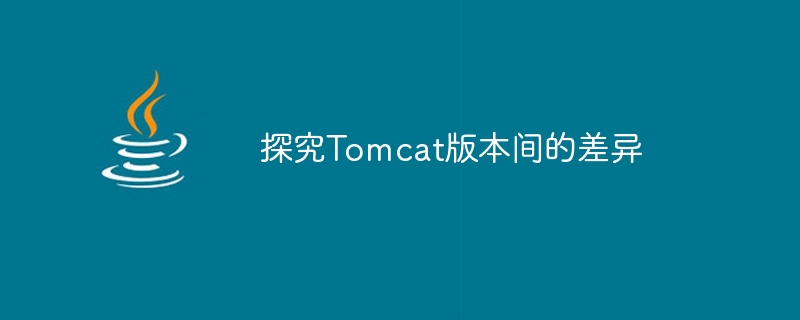

To explore the differences between Tomcat versions, specific code examples are required
Introduction:
As an open source Java Web server, Tomcat plays the role of hosting and running Java Important role of web applications. Over time and version upgrades, Tomcat continues to evolve and improve, bringing many new features and functions. This article will explore the differences between different versions of Tomcat and provide specific code examples to help readers better understand and adapt to these changes.
1. Introduction to Tomcat version
Tomcat version iterations are very active, and there have been many important versions so far. The following is a brief introduction to several important Tomcat versions:
public class HelloWorldServlet extends HttpServlet { protected void doGet(HttpServletRequest request, HttpServletResponse response) throws ServletException, IOException { response.setContentType("text/html;charset=UTF-8"); PrintWriter out = response.getWriter(); out.println(""); out.println(""); out.println("Hello World!
"); out.println(""); out.println(""); } }
public class HelloWorldServlet extends HttpServlet { protected void doGet(HttpServletRequest request, HttpServletResponse response) throws ServletException, IOException { response.setContentType("text/html;charset=UTF-8"); PrintWriter out = response.getWriter(); out.println(""); out.println(""); out.println("Hello World!
"); out.println(""); out.println(""); } }
@WebServlet("/hello") public class HelloWorldServlet extends HttpServlet { protected void doGet(HttpServletRequest request, HttpServletResponse response) throws ServletException, IOException { response.setContentType("text/html;charset=UTF-8"); PrintWriter out = response.getWriter(); out.println(""); out.println(""); out.println("Hello World!
"); out.println(""); out.println(""); } }
@WebServlet("/hello") public class HelloWorldServlet extends HttpServlet { protected void doGet(HttpServletRequest request, HttpServletResponse response) throws ServletException, IOException { response.setContentType("text/html;charset=UTF-8"); PrintWriter out = response.getWriter(); out.println(""); out.println(""); out.println("Hello World!
"); out.println(""); out.println(""); } }
2. Differences between versions
Although there are some differences between different versions of Tomcat, the core functions and usage methods remain basically the same. The following lists some possible differences:
3. Conclusion
As a very popular Java Web server, Tomcat has some differences between its different versions. By understanding and exploring the differences between Tomcat versions, we can better adapt to and apply different versions of Tomcat, and choose the appropriate version according to project needs. This article provides some specific code examples to help readers quickly get started and understand different versions of Tomcat.
By studying the differences between Tomcat versions, we can better utilize Tomcat's new features, optimize the performance of web applications, and improve the efficiency of development and deployment. I hope this article will be helpful to readers when choosing and using Tomcat version.
References:
The above is the detailed content of Study the differences between different versions of Tomcat. For more information, please follow other related articles on the PHP Chinese website!
 How to configure Tomcat environment variables
How to configure Tomcat environment variables How to integrate idea with Tomcat
How to integrate idea with Tomcat How to view Tomcat source code
How to view Tomcat source code What are the common tomcat vulnerabilities?
What are the common tomcat vulnerabilities? How to solve garbled tomcat logs
How to solve garbled tomcat logs What are the differences between weblogic and tomcat
What are the differences between weblogic and tomcat What are the differences between tomcat and nginx
What are the differences between tomcat and nginx How to solve tomcat startup crash
How to solve tomcat startup crash



